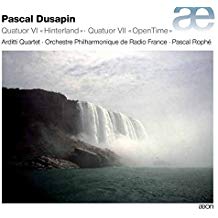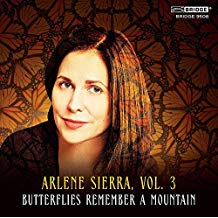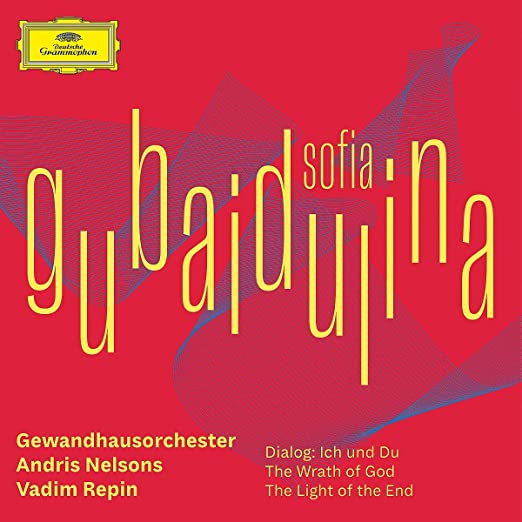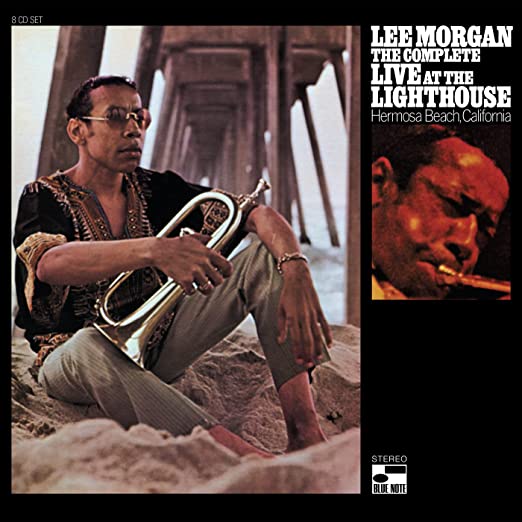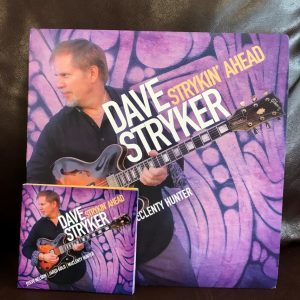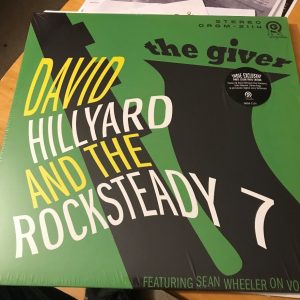Saariaho and Koh. Jennifer Koh, violin. Nicolas Hodges, piano. Hsin-Yun Huang, viola. Wilhelmena Smith, cello. Anssi Kaarttunen, cello, Curtis 20/21 Ensemble, Conner Gray Covington, conductor. Çedille CDR 90000183.
There is some contemporary music we listen to because we just want to know what's going on. This is not the same as keeping up with fashion, though I expect it's more different in degree than kind. We find ourselves willing, even eager, to attend to things we're not really ready for, yet. Music on the outskirts of what we're comfortable with, even at a stretch. Some of it we never catch up with, in large part, I like to believe, because there's nothing really there. But if we're lucky and we find our way to Thomas Adès, Sofia Gubaidulina, Lera Auerbach, Pascal Dusapin, Brian Ferneyhough...and Kaja Saariaho, to name the handful I've stuck with, we get at least a substantive taste of what our descendants, if they're still listening to classical music (!), will enjoy, admire, or at least live with more gracefully than we are able to do, yet.
Widely heralded and admired Finnish modernist Kaija Saariaho and I have been at odds with each other in my house for several years now over whether she's the road ahead or an eccentric side road. Because we hear different voices from the universe around us—or are at least tuned to it differently. She is unique and formidable, a little in the spirit of Gubaidulina, if a little more opaque. You can't get to her from anywhere else. And she will not come to you. I am trying her again today because Jennifer Koh is one of my favorite violinists and because cellist Wilhelmena Smith is her complement. I will follow either of these two musicians anywhere they choose to go.
It would not be unfair to say that in all of this music the instruments wrestle with one another, twisting and turning about in a bold effort to create sonic coherence. When the music succeeds, it does so by pulling us into the struggle, by persuading us that we need to be part of this desperately emotional experience. It is the violin who is the protagonist. It is her virtuosic struggle we are trying to comprehend. And I can imagine no better musician to bring this off than Koh.
There are no easy entries into this music. We are forced to take it or leave it on its own demanding terms. This is both admirable and frustrating, as music that attempts to break new ground should be. The avant-garde is by definition ahead of its time.
Note: A dear friend of mine from Newfoundland who plays the violin listened to this CD and wrote this:
Beautiful! Love the dialogue, the harmonies—diminished chords abound and loved the discord. It is beautifully performed, finely recorded and offers a clear spacious soundstage.
She has betters ears and far more musical knowledge than I have and should have written this review. I am humbled by it.
Pascal Dusapin, Quartets Nos. VI and VII. Arditti Quartet. Orchestre de Radio France. Pascal Raphé. Aeon AECD 1753.
Dusapin, the most prominent contemporary French modernist, is perhaps more interesting than Saariaho but no more comprehensible and a little less appealing on the surface. His music sits out on a different part of the periphery than hers but it is on the periphery nonetheless. There is a sense of frenzied geometry going on with less emotional intensity. To my ears, this is Pierre Boulez country, as well it ought to be.
I like a string quartet playing with an orchestra—Quartet No VI 'Hinterland' (!)—mainly for the added interest that lies in the full and complex texture of the music. There is considerable intensity here, notably minimalist in its steadily repeating figures. The other instruments begin to swarm about the quartet before we're too far into the work and then back off to let us savor the contrast of a solo cello. Quartet and orchestral are on more equal terms by the midpoint, the latter providing a sonic context for the quartet's furious activity on center stage. As a musical world, Quartet No. VI offers a fairly alien landscape for our contemplation. Hinterland indeed.
Quartet No. VII is full of the musical equivalent of speculation, some of it quiet and introspective, some more open and anxiously searching. The fury of No. VI is gone, in its place the leaner textures of a string quartet dancing, walking, fencing, reflecting. All of this takes place in twenty-one brief musical studies, so the mood changes frequently. Dusapin calls them "variations" but there is no recognizable theme on which they're based, so they amount more to varieties than variations. I found the most satisfying listening approach was to consider the work as a journey. Once you fall in love with the sound of the four instruments, it's almost a pleasant trip!
This is the Arditti Quartet we are listening to here, who are famously critical in what music they choose to perform and record. They are the interpreters of modernist music for string quartet, which is a strong argument for taking their counsel on what music will last, which I do.
Arlene Sierra, Vol. 3. 'Butterflies Remember a Mountain.' [chamber music] Nicola Benedetti, violin. Leonard Elschenbroich, cello, Alexi Grynyuk,piano. Jesse Mills, viola, Raman Ramakrishnan, cello. Susan Grace, piano. Ricko Aizawa, piano, Alilce Rybak, piano. Bridge 9506.
How do relatively invisible composers like American born, UK based Arlene Sierra become visible? Because of enterprising labels like Bridge Records is how. Hidden behind the prominent mode and voice of the Saariahos and Dusapins, there exist composers less concerned with taking music into the future, as admirable and necessary as avant-garde work is, than in working within the existing (modernist) aesthetic to see what remains to be achieved there.
Sierrra is accessible without being especially 'easy,' if you have grown up with earlier modernisms. Elegant, sometimes muscular, sometimes lyrical, this is music for those not in tune with the more conspicuous ranks of the contemporary musical world.
Duos for piano violin, for violin and cello and piano, and for two pianos. I clearly have two more volumes to catch up with, which I'm told present music for larger forces.
David Finckel and Wu Han. Sonatas for cello and keyboard by Bach, Mendelssohn, Debussy, and Britten. Artistled. https://www.artistled.com/
As some you know, cellist David Finckel and pianist Wu Han are an inspiring pair of musicians who, in addition to traveling and performing together as a duo, have dedicated several years of their professional lives now to two musical institutions, the annual Music@Menlo Chamber Music Festival in Palo Alto, California and the Chamber Music Society of Lincoln Center. Meaning unless we're able to find one of their recitals, we seldom hear them. Both appear on the live concert recordings made at the Music@Meno festival and there have been a handful of CDs like this one from their own label, Artisled. But that's it. I would expect a less selfless career path would have had them recording together or individually on major recording labels and performing with major orchestras. I was thrilled when they came to Amherst Colleges' Buckley Recital Hall a few years ago and happy to hear that neither of them has lost a step. To my ears, Finckel was the heart of the monumental Emerson String Quartet until he left a few years ago to take on these added responsibilities—and to my ears that institution has not been quite the same since.
As I say, there have been a few Finckel/Wu Han recordings from Artistled. This is the first in several years. It lets us hear their versatility and wonderful feel for each other's understanding of the music they play. This is especially evident in the Britten sonata, where I hear some things in their interpretation I've never noticed before. This work is worth the price of the album by itself. The time Finckel spent as a student with Rostropovich was clearly a great investment!
For David Finckel and Wu Han, an album on which they play works written expressly for them by contemporary composers, is another superb outing. That is the album on which I was introduced to Russian American composer Lera Auerbach, whose contribution I couldn't get out of head for weeks. The Russian Classics and Grieg/Schumann/Chopin albums are two more releases worth searching out.
System used for this audition: Resolution Audio Cantata 3.0 CD player w/BlackJack power cord; Blue Circle NSI G integrated solid state amplifier; Jean Marie Reynaud Abscissa Jubilee loudspeakers; Crimson interconnects and speaker cable; Mapleshade Samson equipment rack.
Bob Neill, a former equipment reviewer for Enjoy the Music and Positive Feedback, is proprietor of Amherst Audio in Western Massachusetts which sells equipment from Audio Note (UK), Blue Circle (Canada), Crimson (UK), Jean Marie Reynaud (France), Resolution Audio (US), and Tocaro (Germany).





